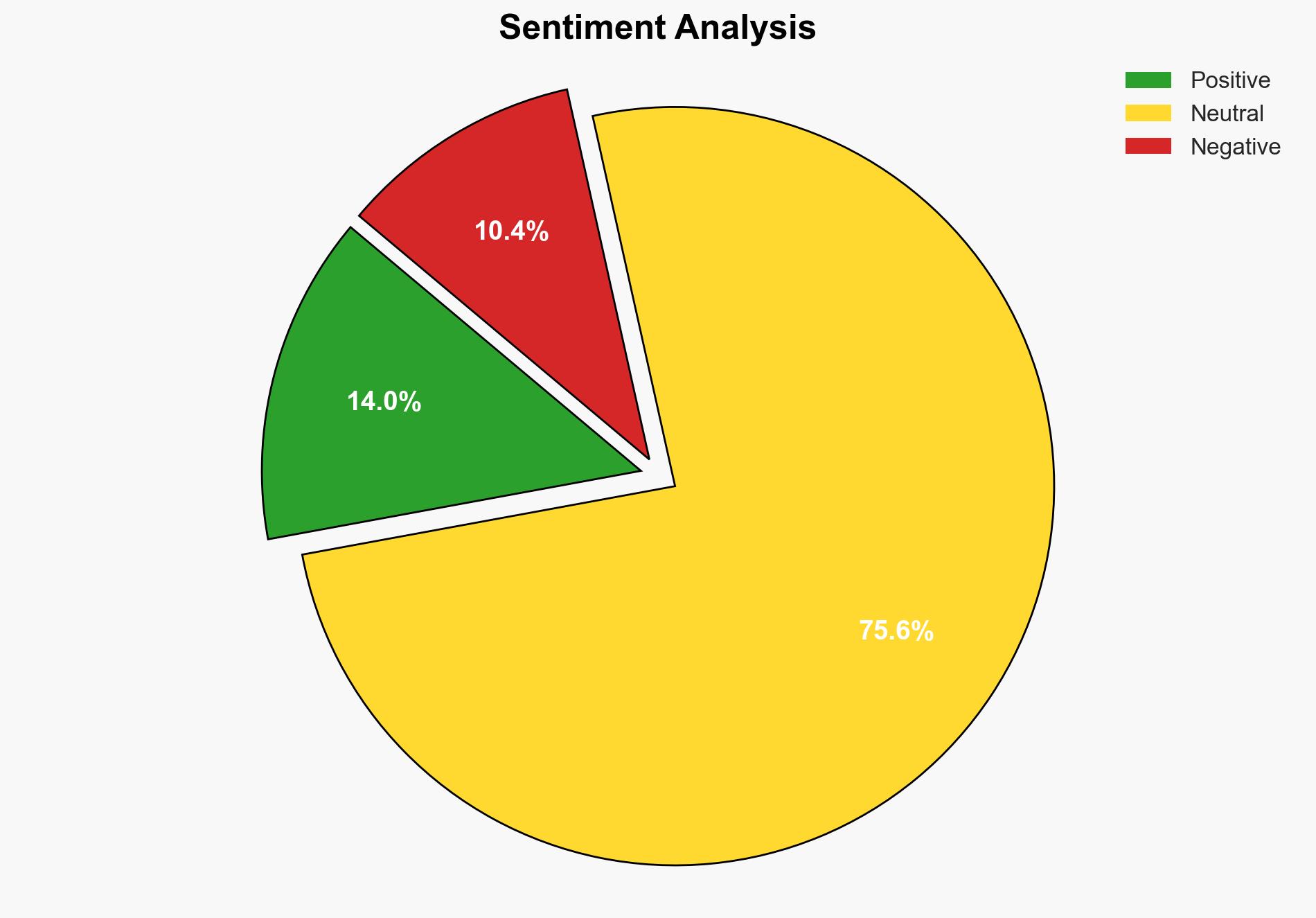Over 20000 WordPress sites hit by damaging malware campaign – TechRadar
Published on: 2025-03-20
Intelligence Report: Over 20000 WordPress sites hit by damaging malware campaign – TechRadar
1. BLUF (Bottom Line Up Front)
A sophisticated malware campaign, identified as “Dollyway,” has compromised over 20,000 WordPress sites globally. This campaign redirects users to fraudulent gambling and cryptocurrency sites, potentially generating millions in revenue for the operators. The malware exhibits advanced evasion and reinfection capabilities, posing significant risks to cybersecurity and economic interests. Immediate action is recommended to mitigate the threat and protect affected systems.
2. Detailed Analysis
The following structured analytic techniques have been applied for this analysis:
General Analysis
The “Dollyway” malware campaign is characterized by its persistence and sophistication. It exploits vulnerabilities in WordPress plugins and themes, employing a Traffic Direction System (TDS) to redirect users based on location, device, and referrer. The campaign’s infrastructure and code patterns suggest a single threat actor, with previous iterations focusing on malware distribution and phishing. The current campaign’s monetization strategy involves redirecting users to fake gambling and cryptocurrency sites, leveraging obfuscation techniques to evade detection.
3. Implications and Strategic Risks
The “Dollyway” campaign poses significant risks to national security, regional stability, and economic interests. The widespread infection of WordPress sites can lead to data breaches, loss of consumer trust, and financial losses for businesses. The campaign’s ability to evade detection and reinfect systems increases the complexity of mitigation efforts. Additionally, the redirection to fraudulent sites can facilitate further criminal activities, including money laundering and fraud.
4. Recommendations and Outlook
Recommendations:
- Implement immediate security patches for WordPress plugins and themes to close vulnerabilities exploited by the malware.
- Enhance monitoring and detection capabilities to identify and block malicious traffic direction systems.
- Encourage collaboration between cybersecurity firms and government agencies to share intelligence and develop comprehensive response strategies.
- Promote awareness and training for website administrators on best practices for cybersecurity.
Outlook:
In the best-case scenario, coordinated efforts to patch vulnerabilities and enhance detection capabilities will mitigate the campaign’s impact. In the worst-case scenario, the campaign could evolve, leading to increased infections and financial losses. The most likely outcome involves continued efforts to disrupt the campaign, with gradual improvements in cybersecurity defenses reducing its effectiveness over time.
5. Key Individuals and Entities
The report mentions significant individuals and organizations involved in the analysis and response to the malware campaign. Notable entities include Godaddy and TechRadar. The report also references Sead, a journalist contributing to the coverage of the incident.





